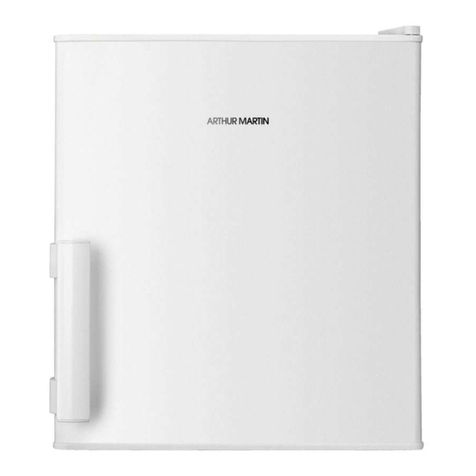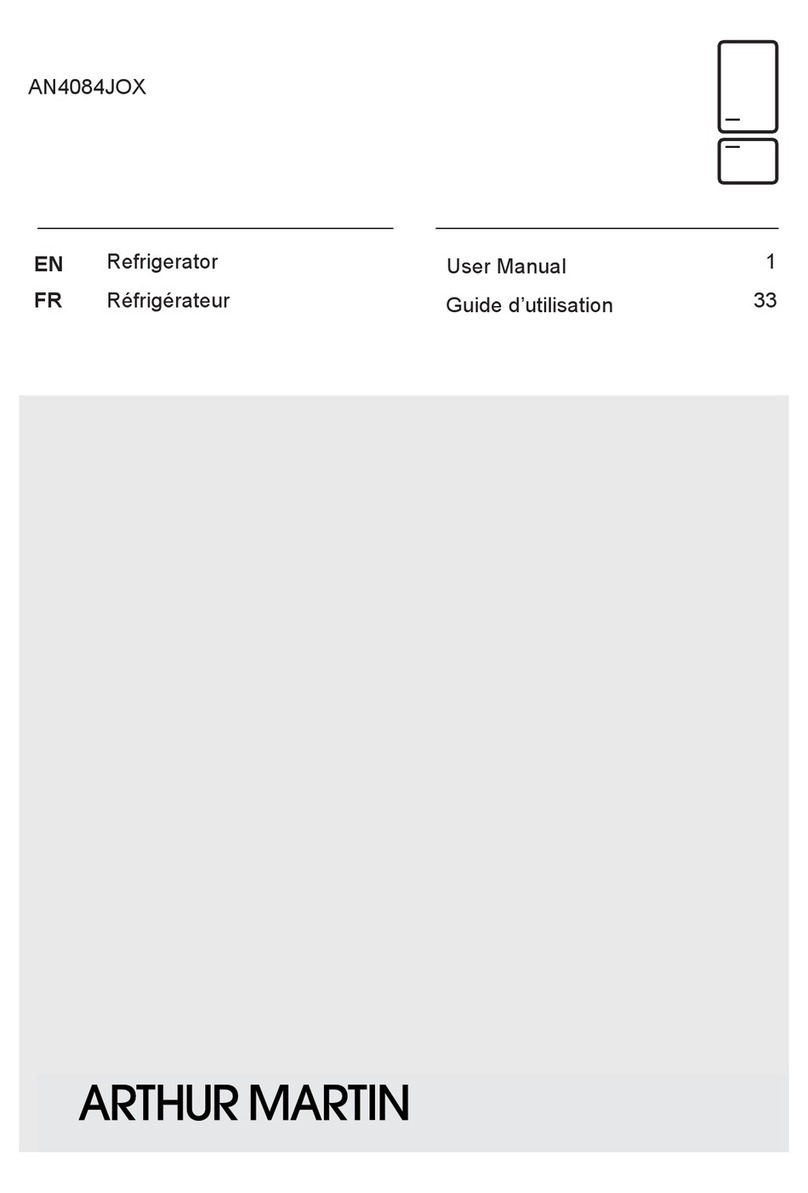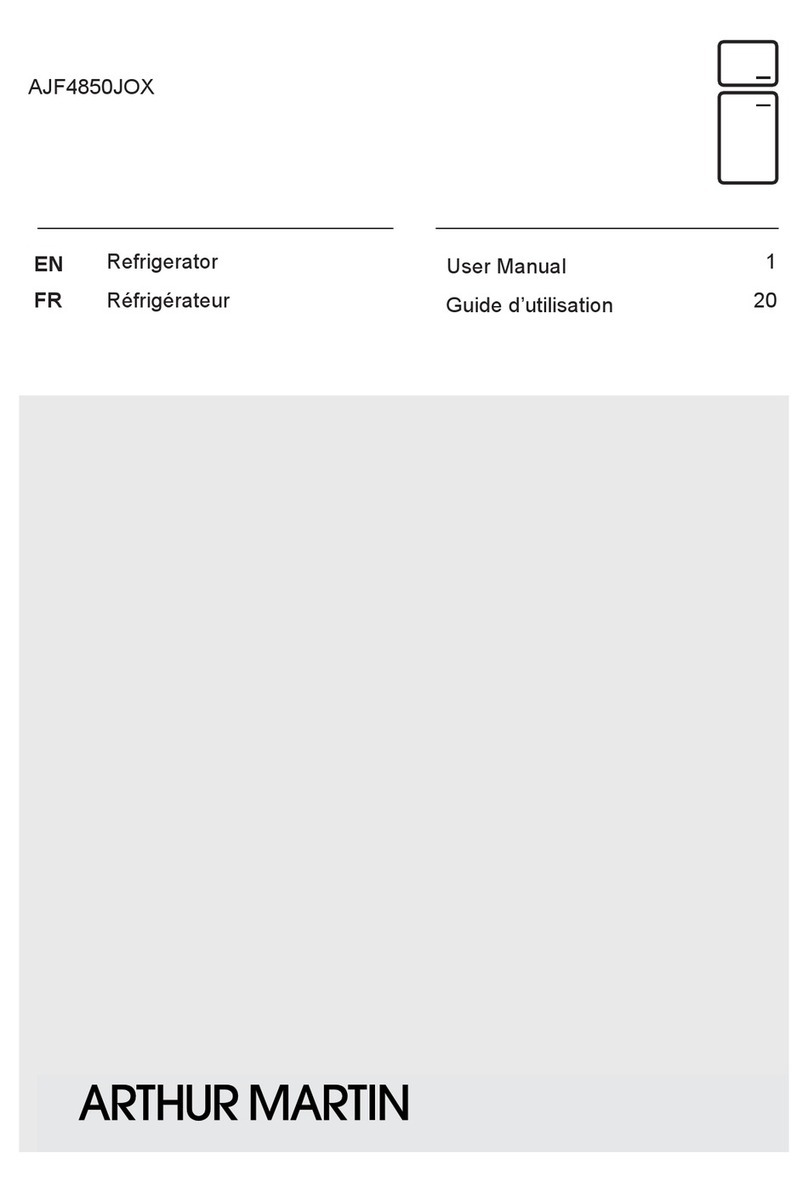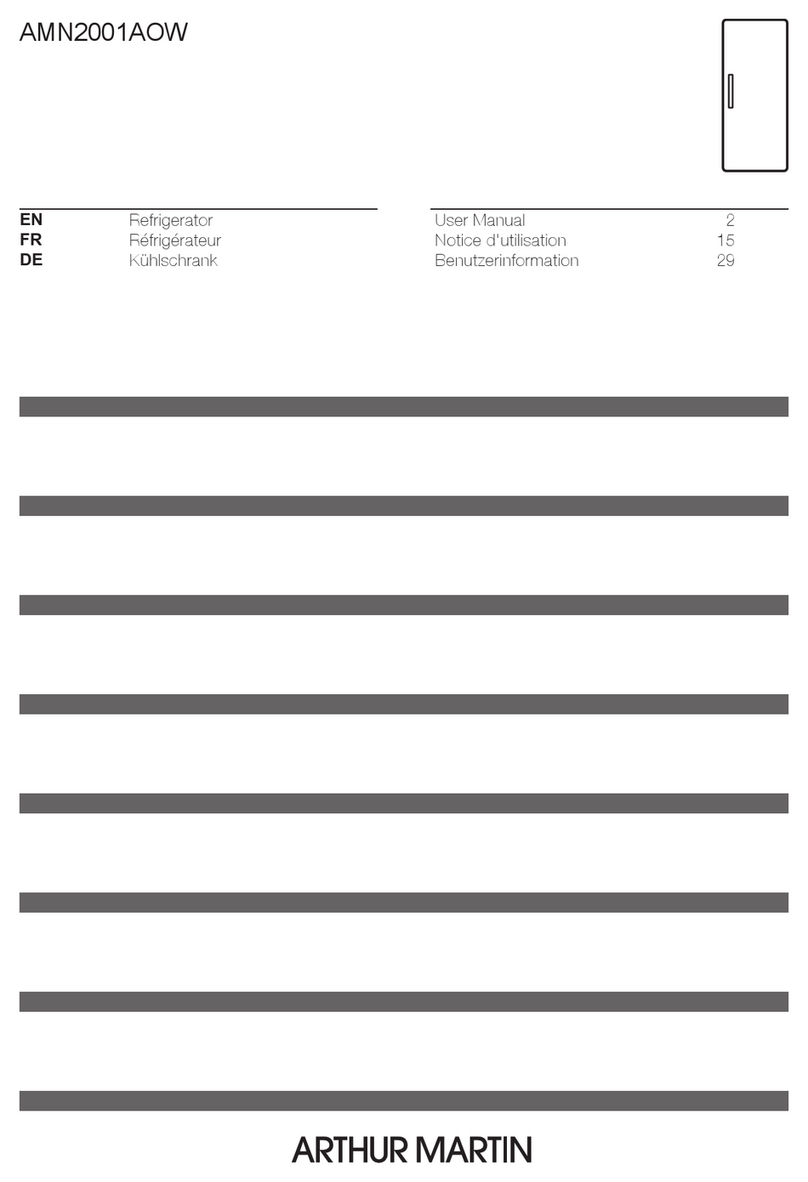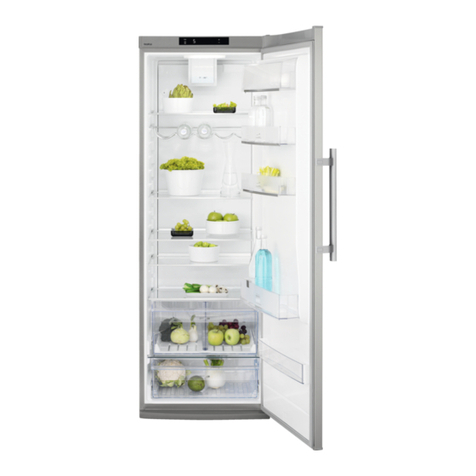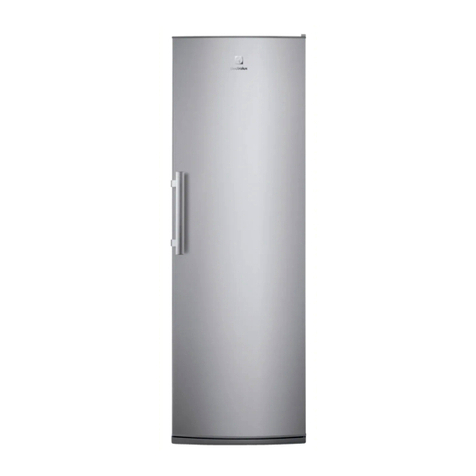
9
FREEZING AND STORING FROZEN FOOD
The freezer compartment is for freezing
and storing food. Important!
IMPORTANT! The temperature
in the freezer compartment must
be -18°C or colder before freezing
food or storing food already
frozen.
Do not freeze too large a quantity at any
one time (max. 1kg per 24hrs). The quality
of the food is best preserved when it is
frozen right through to the core as quickly
as possible.
Allow warm food to cool down before
freezing. The warmth will cause increased
ice formation and increase the power
consumption.
Please note the maximum storage times
specified by the manufacturer.
Thawed foods which have not been
processed further (cooked into meals)
may not under any circumstances be
frozen a second time.
Containers with flammable gases or
liquids can leak at low temperatures.
There is a risk of an explosion!
Do not store any containers
with flammable materials such
as spray cans, fire extinguisher
refill cartridges etc in the freezer
compartment.
Bottles and cans must not be placed in
the freezer. They can burst when the
contents freeze, high carbonate content
drinks can even explode! Never store
lemonade, juices, beer, wine, sparkling
wine etc. in the freezer compartment. All
foods must be packed air tight prior to
freezing, so that they do not dry out or
lose their flavour, and so that no flavour
contamination of other frozen goods
occurs.
Tip:
Food in the fridge should always be
covered or packaged, to prevent drying
and tainting of other food.
The following are suited for packaging:
– Polyethylene airtight bags and wraps;
– Plastic containers with lids;
– Special plastic covers with elastic;
– aluminium foil.
CAUTION! Do not touch frozen
food with wet hands. Your hands
could stick to the food and cause
skin abrasions. Lay the packaged
food on the floor of the freezer
compartment. Unfrozen food must
not touch items already frozen,
otherwise the frozen food could
begin to defrost.
Tips:
The following are suited for the packaging
of frozen goods: freezer bags and
polyethylene wraps; special cans for
frozen goods; extra-thick aluminium foil.
The followings are suitable for sealing
bags and wrap: plastic clips, rubber bands
or tape. Smooth the air out of the bag
before sealing; air makes it easier for the
frozen food to dry out.
Make flat packages, because these freeze
more quickly.
Do not fill cans for frozen goods to the
brim with liquid or paste-like goods,
because liquids expand during freezing.
Preparation of ice cubes
Fill the ice cube tray 3/4 full with cold
water, place it in the freezer compartment
and leave to freeze. To loosen the frozen
cubes, either bend the ice cube tray or
hold it under running water for a few
seconds.
IMPORTANT! Never try to free an
ice tray that is frozen to the freezer
compartment using pointed or
sharp edged objects, since you
may damage the refrigerating
circuit. Use the plastic scraper.
